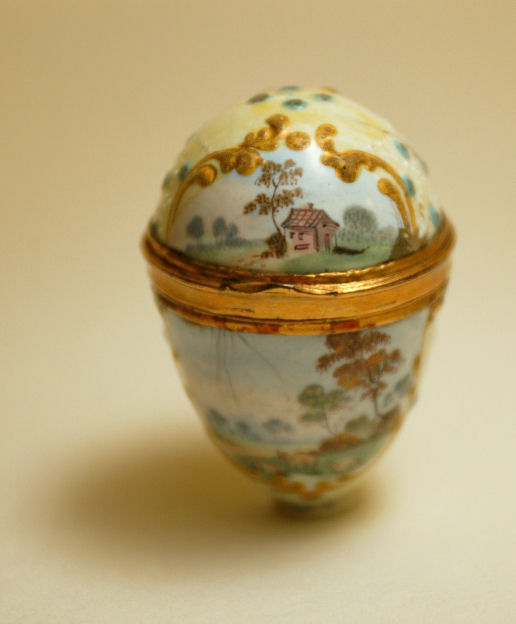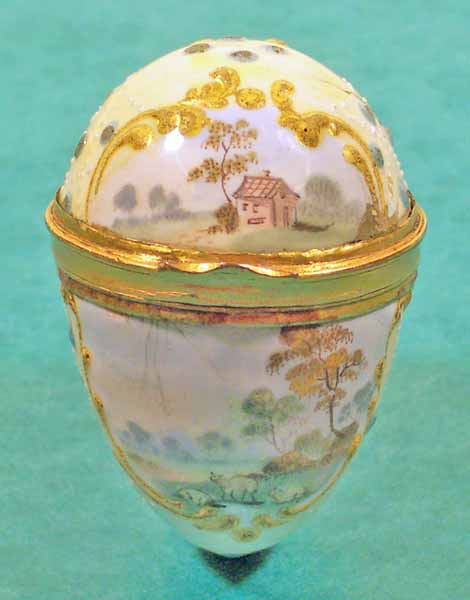bonbonniere
Summary
An egg-shaped box with a hinged lid within a plain ormolu mount. Enamel on metal and painted in colours with four landscapes within raised gilt scroll borders on a pale yellow ground decorated with a faint trellis pattern in white and large raised dots in turquoise.
Display Label
I'm Janet Boston, I'm Curator of Decorative Art at Manchester Art Gallery. This box was made in Staffordshire its made by hand, painted in enamels and dates from about 1770. The boxes come in all sorts of shapes and sizes; they were a kind of 18th century fashion accessory, something that people would have showed off with really much as today somebody might show off their rather nice new mobile phone. It would have been quite expensive to produce because it is made by hand and there's a lot of labour in it. So it is something that would have belonged to somebody quite wealthy. This particular object was called a bonbonniere - comes from French, from bonbon, meaning sweet, and as the name suggests, it was used for storing sweets; sugar coated nuts or herbs which would freshen the breath. Sugar became increasingly affordable during the 18th and 19th century. So initially when it first came to this country it was very much a very high priced luxury product, but it became more available to the masses. By the early 19th century, it was a staple part of the British diet. People were only vaguely aware of where the items came from. Of course, 18th century sugar was a plantation product, it was the product of slave labour. We do know that there were actually consumer boycotts of cane sugar at that time. There were people amongst the Quaker movement for example who cultivated sugar beet as an alternative to sugar cane so they could avoid consuming sugar cane and there were also campaigns including campaigns led by local women that boycotted cane sugar as well. So people were aware of where it came from and of the suffering that went into actually making this product. I don't actually know as a decorative art curator how much access ordinary people had to information about the slave trade and about what went on in the plantations as well. Obviously at that time many people didn't read and write so I don't know just how much information people had. And also there would have been a certain amount of misinformation as well from people who had vested interest. There may have been people who had economic interest in slavery who would put about wrong information about it. Today there is more access to finding out about how things are made, but it's kind of not volunteered. You have to know where to look. For example how many of us today actually know where the sugar we have in our cupboards at home came from? Do we know whether the people who produced that sugar were actually paid a fair price for producing it. How much do we really know about the lives of people who produce sugar today?
Object Name
bonbonniere
Date Created
c 1770
Dimensions
object: 4.5cm
accession number
1958.467
Collection Group
Place of creation
South Staffordshire
Medium
Credit
Harold Raby bequest
Legal
© Manchester Art Gallery


.jpg)
.jpg)
